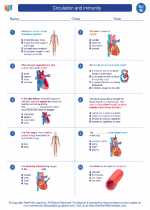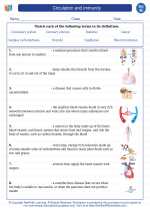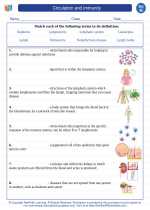Aquatic Habitats
An aquatic habitat is a place where plants and animals live in or around water. These habitats can be found in both freshwater and saltwater environments, and they can vary in size from small ponds to vast oceans. Aquatic habitats are home to a wide variety of organisms, each adapted to the specific conditions of their environment.
Types of Aquatic Habitats
There are several types of aquatic habitats, including:
- Ponds and Lakes: These are bodies of freshwater that can vary in size and depth. They are home to a diverse array of plants and animals, including fish, amphibians, and waterfowl.
- Rivers and Streams: These flowing bodies of water provide habitat for fish, insects, and other aquatic species. They are often characterized by their fast-flowing currents and rocky bottoms.
- Wetlands: Wetlands are areas where the land is saturated with water, such as marshes, swamps, and bogs. They are important for supporting unique plant and animal communities.
- Coral Reefs: These marine habitats are found in warm, shallow waters and are home to a diverse array of marine life, including corals, fish, and other invertebrates.
- Estuaries: Estuaries are where rivers meet the sea, creating a unique mix of freshwater and saltwater. They provide important habitat for many species of fish, birds, and other wildlife.
- Oceans: The vast open oceans are home to a wide variety of marine life, from tiny plankton to massive whales. They are some of the most diverse and productive ecosystems on Earth.
Adaptations to Aquatic Habitats
Plants and animals that live in aquatic habitats have evolved a range of adaptations to survive in these environments. Some common adaptations include:
- Gills: Many aquatic animals have gills that allow them to extract oxygen from the water.
- Floatation Devices: Some plants have air-filled structures that help them float on the water's surface.
- Camouflage: Many aquatic animals have evolved camouflage to help them blend in with their surroundings and avoid predators.
- Buoyancy Control: Some marine animals have special adaptations to control their buoyancy, allowing them to move up and down in the water column.
Importance of Aquatic Habitats
Aquatic habitats are incredibly important for the health of the planet. They provide food, water, and shelter for a wide variety of organisms, and they also play a critical role in nutrient cycling and climate regulation. Additionally, many human communities rely on aquatic habitats for fishing, recreation, and tourism.
Study Guide
Here are some key points to remember when studying aquatic habitats:
- Identify the different types of aquatic habitats and the characteristics of each.
- Understand the adaptations that plants and animals have developed to live in aquatic environments.
- Explain the importance of aquatic habitats for both wildlife and human communities.
- Discuss the threats facing aquatic habitats, such as pollution, overfishing, and climate change.
- Describe the ways in which we can protect and conserve aquatic habitats for future generations.
By understanding the complexities of aquatic habitats, we can work towards preserving these vital ecosystems for the benefit of all life on Earth.
.◂Science Worksheets and Study Guides Eighth Grade. Circulation and immunity

 Worksheet/Answer key
Worksheet/Answer key
 Worksheet/Answer key
Worksheet/Answer key
 Worksheet/Answer key
Worksheet/Answer key
 Vocabulary/Answer key
Vocabulary/Answer key
 Vocabulary/Answer key
Vocabulary/Answer key
 Vocabulary/Answer key
Vocabulary/Answer key
 Vocabulary/Answer key
Vocabulary/Answer key
 Vocabulary/Answer key
Vocabulary/Answer key
 Vocabulary/Answer key
Vocabulary/Answer key
 Vocabulary/Answer key
Vocabulary/Answer key
